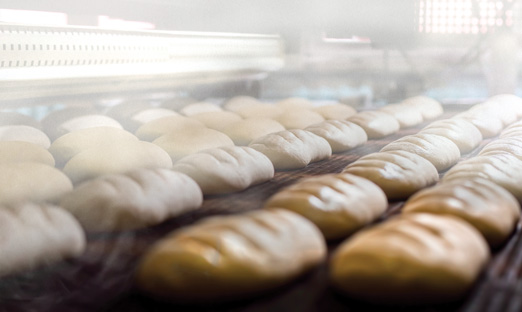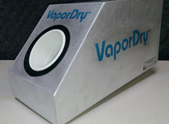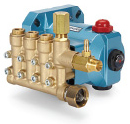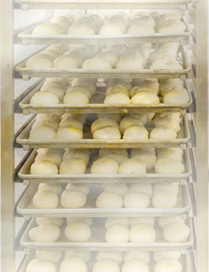
Relative Humidity and Baking
The amount of humidity in the air affects baking times and the overall quality of the product. During retardation, proofing, baking, and storage, humidity levels should be controlled. Humidity slows the baking process of bread due to a decrease in moisture evaporation and gluten coagulation in the crust. A higher humidity will also keep the surface moisture from evaporating too soon, making the dough flexible longer and improving the crust’s color.
| Systems |  Low air pressure + Low water pressure + Low maintenance Low air pressure + Low water pressure + Low maintenance= Low Cost |
 Customized nozzle and stainless steel pipe system Customized nozzle and stainless steel pipe system |
|---|---|---|
| Capacity per system GPH (gallons per hour) |
1 GPH | 0.75 GPH |
| Ceiling Height/ Mount | Low ceiling, wall/suspension mount | High ceiling or suspension mount |
| Technology | Patent pending | Water atomizing |
| Compressor Required | Yes | No |
| Drain Required | Yes | No |
Retardation and Proofing Stage
During the retardation and proofing stages, the internal moisture content is directly affected by the surrounding humidity and temperature levels. The lower the humidity at that point, the crustier the surface layer will become while baking. The optimal controlled humidity level will depend on the desired product being baked.

Controlled humidity prevents drying and cracking and achieves consistent color, surface texture and quality.
A precisely controlled relative humidity environment is important in the production, proofer and oven areas of a baking operation. Most dough fermentation rooms require over 75% RH. Proofers require a relative humidity level over 80% to prevent skin from forming during the final proofing stage.

